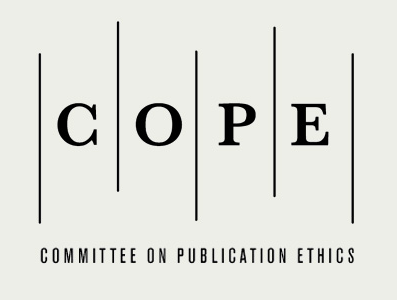Наставни приступ деци с визуелним дисфункцијама – практична упутства за усвајање академских вештина
Александра Б. Грбовић, Универзитет у Београду, Факултет за специјалну едукацију и рехабилитацију, Београд, Србија, имејл: ksenijastanimirov@fasper.bg.ac.rs
Ксенија М. Станимиров, Универзитет у Београду, Факултет за специјалну едукацију и рехабилитацију, Београд, Србија
Иновације у настави, XXXVII, 2024/4, стр. 1–16
| PDF | | Extended summary PDF |
DOI: 10.5937/inovacije2404001G
Резиме: Oбразовање деце с тешкоћама у визуелном функционисању које настају као последица лезија или дисфункција у централном нервном систему представља значајан изазов. Ово стање се назива церебрално оштећење вида, а прати га најчешће уредан офталмолошки налаз. Функционални проблеми који се код деце јављају могу се манифестовати као блаже тешкоће код усмеравања визуелне пажње, све до потпуне немогућности ефикасне употребе вида у одређеним ситуацијама. Овакво варијабилно дететово понашање бива (криво) протумачено као неспретност, недостатак разумевања и пажње или се приписује проблемима у социјалном функционисању и комуникацији, при чему у највећем броју случајева није препознато као последица тешкоћа у визуелном функционисању. Проблеми с видом резултирају проблемима у академским активностима, а потребе деце с церебралним оштећењем вида су јединствене.
Циљ рада је да се, кроз преглед литературе, укаже на специфична понашања која одликују децу с церебралним оштећењем вида и дају опште препоруке за наставни приступ у раду с овим ученицима, што би могло да омогући побољшање њихових наставних постигнућа и олакша стицање академских вештина. У раду су дати предлози наставних стратегија, предлози за адаптације наставног материјала, као и препоруке за адаптације у простору. Наведене адаптације могу бити корисне, како ученицима с церебралним оштећењем вида, тако и ученицима с другим тешкоћама у развоју, али и ученицима типичне популације.
Кључне речи: церебрално оштећење вида, читање, математика, наставни приступ, адаптације
Summary: The education of children with difficulties in visual functioning caused by lesions or dysfunctions in the central nervous system represents a significant challenge. This condition is called cerebral visual impairment and it is usually accompanied by normal ophthalmological results. Functional problems that occur in children can manifest as mild difficulties in directing visual attention, up to the complete inability to use vision effectively in certain situations. This variable behaviour of a child is (wrongly) interpreted as clumsiness, a lack of understanding and attention or it is attributed to problems in social functioning and communication, where in most cases it is not recognised as a consequence of difficulties in visual functioning. Problems with eyesight result in problems in academic activities, and the needs of children with cerebral visual impairment are unique. The aim of the paper is to point out, by reviewing the relevant literature, the specific behaviours typical of children with cerebral visual impairment and to offer general recommendations for an adequate teaching approach in working with these students, which could result in the improvement of their school achievement and facilitate the acquisition of academic skills. The paper contains suggestions for teaching strategies and adaptations of teaching materials, as well as recommendations for adaptations in space. The aforementioned adaptations can be useful both for students with cerebral visual impairment and for students with other developmental disabilities, as well as for students from
the typical population.
Keywords: cerebral visual impairment, reading, mathematics, teaching approach, adaptations
Литература:
- Alimović, S. (2012). The assessment and rehabilitation of vision in infants. Paediatrica Croatica, 56(1), 218–226.
- Ben Itzhak, N., Vancleef, K., Franki, I., Laenen, A., Wagemans, J., & Ortibus, E. (2020). Visuoperceptual profiles of children using the Flemish cerebral visual impairment questionnaire. Developmental Medicine & Child Neurology, 62(8), 969–976. https://doi.org/10.1111/dmcn.14448
- Bennett, C. R., Bauer, C. M., Bailin, E. S., & Merabet, L. B. (2020). Neuroplasticity in cerebral visual impairment (CVI): Аssessing functional vision and the neurophysiological correlates of dorsal stream dysfunction. Neuroscience & Biobehavioral Reviews, 108, 171–181. https://doi.org/10.1016/j.neubiorev.2019.10.011
- Bennett, R. (2024). Exploring math and CVI. https://www.perkins.org/resource/visualizing-math-considerations-for-students-with-cvi/
- Bjornsson, H. D., Al-Zubidi, N., Saluja, G., S. Prakalapakorn, G., Kumar, P., Marcet, M. M., & Rodriguez, S. (2024). Cerebral visual impairment. American Academy of Ophthalmology. https://eyewiki.org/Cerebral_Visual_Impairment
- Booth, T., & Ainscow, M. (2010). Priručnik za inkluzivni razvoj škole. Save the children i Zavod za vrednovanje kvaliteta obrazovanja i vaspitanja.
- Booster, J. B., McCarthy, J. W., Brown, K., Spitzley, A. M., & Blackstone, S. W. (2021). Creating a path for systematic investigation of children with cortical visual impairment who use augmentative and alternative communication. American Journal of Speech-Language Pathology, 30(4), 1880–1893. https://doi.org/10.1044/2021_ajslp-20-00203
- Campbell, A., Chen, D., Edgar, J., & Steendam, M. (2022). Considerations for Educating Students with CVI: The Learning Environment. PaTTAN (Pennsylvania Training and Technical Assistance Network). https://www.pattan.net/Publications/Considerations-for-Educating-Students-With-CVI-The
- Chang, M. Y., & Borchert, M. S. (2020). Advances in the evaluation and management of cortical/cerebralvisual impairment in children. Survey of Ophthalmology, 65(6), 708–724. https://doi.org/10.1016/j.survophthal.2020.03.001
- Chokron, S., & Dutton, G. N. (2016). Impact of cerebral visual impairments on motor skills: Implications for developmental coordination disorders. Frontiers in Psychology, 7, 1471. https://doi.org/10.3389%2Ffpsyg.2016.01471
- Chokron, S., Kovarski, K., & Dutton, G. N. (2021). Cortical visual impairments and learning disabilities. Frontiers in Human Neuroscience, 15. https://doi.org/10.3389/fnhum.2021.713316
- Cohen-Maitre, S. A., & Haerich, P. (2005). Visual attention to movement and color in children with cortical visual impairment. Journal of Visual Impairment & Blindness, 99(7), 389–402. https://doi.org/10.1177/0145482X0509900702
- Dehaene, S., Spelke, E., Pinel, P., Stanescu, R., & Tsivkin, S. (1999). Sources of mathematical thinking: Behavioral and brain imaging evidence. Science, 284(5416), 970–973. https://doi.org/10.1126/science.284.5416.970
- Dutton, G. N., & Jacobson, L. K. (2001). Cerebral visual impairment in children. Seminars in Neonatology, 6(6), 477–485. https://doi.org/10.1053/siny.2001.0078
- Edelman, S., Lashbrook, P., Carey, A., Kelly, D., King, R. A., Roman-Lantzy, C., & Cloninger, C. (2006). Cortical visual impairment: Guidelines and educational considerations. Deaf-Blind Perspectives, 13(3). https://documents.nationaldb.org/dbp/pdf/may06.pdf
- Fazzi, E., Signorini, S. G., Bova, S. M., La Piana, R., Ondei, P., Bertone, C., Misefari, W., & Bianchi, P. E. (2007). Spectrum of visual disorders in children with cerebral visual impairment. Journal of Child Neurology, 22(3), 294–301. https://doi.org/10.1177/08830738070220030801
- Fazzi, E., Bova, S., Giovenzana, A., Signorini, S., Uggetti, C., & Bianchi, P. (2009). Cognitive visual dysfunctions in preterm children with periventricular leukomalacia. Developmental Medicine & Child Neurology, 51(12), 974–981. https://doi.org/10.1111/j.1469-8749.2009.03272.x
- Fellenius, K. (1999). Swedish 9-year old readers with visual impairments: A heterogenous group. Journal of Visual Impairment & Blindness, 93(6), 370–380. https://doi.org/10.1177/0145482X9909300605
- Fellenius, K., Ek, U., & Jacobson, L. (2001). Reading strategies in children with cerebral visual impairment caused by periventricular leukomalacia. International Journal of Disability, Development and Education, 48(3), 283–302. https://doi.org/10.1080/10349120120073421
- Gilbert, C., Bowman, R., & Malik, A. N. (2017). The epidemiology of blindness in children: Changing priorities. Community Eye Health, 30(100), 74–77.
- Good, W. V., Jan, J. E., Burden, S. K., Skoczenski, A., & Candy, R. (2001). Recent advances in cortical visual impairment. Developmental Medicine and Child Neurology, 43(1), 56–60. https://doi.org/10.1111/j.1469-8749.2001.tb00387.x
- Goodenough, T., Pease, A., & Williams, C. (2021). Bridging the gap: Parent and child perspectives of living with cerebral visual impairments. Frontiers in Human Neuroscience, 15. https://doi.org/10.3389/fnhum.2021.689683
- Grbović, A. (2017). Metodski pristupi čitanju i pisanju kod slabovide dece i odraslih. Univerzitet u Beogradu, Fakultet za specijalnu edukaciju i rehabilitaciju.
- Grbovic, A., Stanimirov, K., Ayyıldız, E., Bankovic, S., & Jablan, B. (2022). Determinants of reading efficiency of the students with visual impairment. Education and Science, 47(209), 55–67. http://dx.doi.org/10.15390/EB.2022.10271
- Jacobson, L., Flodmark, O., & Martin, L. (2006). Visual field defects in prematurely born patients with white matter damage of immaturity: A multiple‐case study. Acta Ophthalmologica Scandinavica, 84(3), 357–362. https://doi.org/10.1111/j.1600-0420.2006.00636.x
- Kozeis, N. (2010). Brain visual impairment in childhood: Mini review. Hippokratia, 14(4), 249–251. https://www.ncbi.nlm.nih.gov/pmc/articles/PMC3031318/pdf/hippokratia-14-249.pdf
- Lam, F. C., Lovett, F., & Dutton, G. N. (2010). Cerebral visual impairment in children: A longitudinal case study of functional outcomes beyond the visual acuities. Journal of Visual Impairment & Blindness, 104(10), 625–635. https://doi.org/10.1177/0145482×1010401008
- Lueck, A. H., Dutton, G. N., & Chokron, S. (2019). Profiling children with cerebral visual impairment using multiple methods of assessment to aid in differential diagnosis. Seminars in Pediatric Neurology, 31, 5–14. https://doi.org/10.1016/j.spen.2019.05.003
- Luff, H. (2019). Individualized instruction in letter name identification for a student with cortical visual impairment (master thesis). University of Nebraska. https://digitalcommons.unl.edu/cgi/viewcontent.cgi?article=1349&context=cehsdiss
- Macintyre-Béon, C., Young, D., Dutton, G. N., Mitchell, K., Simpson, J., Loffler, G., Bowman, R., & Hamilton, R. (2013). Cerebral visual dysfunction in prematurely born children attending mainstream school. Documenta Ophthalmologica, 127(2), 89–102. https://doi.org/10.1007/s10633-013-9405-y
- Maksimović, Ј. М., i Stamatović, Ј. D. (2021). Inkluzija u obrazovanju: istraživački pristupi i problemi. Inovacije
u nastavi, 34(3), 26–42. https://doi.org/10.5937/inovacije2103026M - Martín, M. B., Santos-Lozano, A., Martín-Hernández, J., López-Miguel, A., Maldonado, M., Baladrón, C., Bauer, C. M., & Merabet, L. B. (2016). Cerebral versus ocular visual impairment: The impact on developmental neuroplasticity. Frontiers in Psychology, 7, 1958. https://doi.org/10.3389/fpsyg.2016.01958
- McDowell, N. (2021). A review of the literature to inform the development of a practice framework for supporting children with cerebral visual impairment (CVI). International Journal of Inclusive Education, 27(6), 718–738. https://doi.org/10.1080/13603116.2020.1867381
- McDowell, N., & Budd, J. (2018). The perspectives of teachers and paraeducators on the relationship between classroom clutter and learning experiences for students with cerebral visual impairment. Journal of Visual Impairment & Blindness, 112(3), 248–260. https://doi.org/10.1177/0145482X1811200304
- McKillop, E., Bennett, D., McDaid, G., Holland, B., Smith, G., Spowart, K., & Dutton, G. (2006). Problems experienced by children with cognitive visual dysfunction due to cerebral visual impairment–and the approaches which parents have adopted to deal with these problems. British Journal of Visual Impairment, 24(3), 121–127. http://dx.doi.org/10.1177/0264619606066186
- Muškinja, O. (2010). Inkluzija – između želje i mogućnosti. https://www.slideshare.net/OliverMukinja/inkluzija-izmedju-elje-i-mogunosti-2011
- Ortibus, E., Laenen, A., Verhoeven, J., De Cock, P., Casteels, I., Schoolmeesters, B., Buyck, A., & Lagae, L. (2011). Screening for cerebral visual impairment: Value of a CVI questionnaire. Neuropediatrics, 42(04), 138–147. https://doi.org/10.1055/s-0031-1285908
- Ortibus, E., Fazzi, E., & Dale, N. (2019, October). Cerebral visual impairment and clinical assessment: the European perspective. Seminars in Pediatric Neurology, 31, 15–24. https://doi.org/10.1016/j.spen.2019.05.004
- Pease, A., Goodenough, T., Sinai, P., Breheny, K., Watanabe, R., & Williams, C. (2021). Improving outcomes for primary school children at risk of cerebral visual impairments (the CVI project): Study protocol for the process evaluation of a feasibility cluster-randomised controlled trial. British Medical Journal Open, 11(5), e044856. https://doi.org/10.1136/bmjopen-2020-044856
- Philip, S. S., & Dutton, G. N. (2014). Identifying and characterising cerebral visual impairment in children: A review. Clinical and Experimental Optometry, 97(3), 196–208. https://doi.org/10.1111/cxo.12155
- Pike, M. G., Holmstrom, G., De Vries, L. S., Pennock, J. M., Drew, K. J., Sonksen, P. M., & Dubowitz, L. M. S. (1994). Patterns of visual impairment associated with lesions of the preterm infant bran. Developmental Medicine & Child Neurology, 36(10), 849–862. https://doi.org/10.1111/j.1469-8749.1994.tb11776.x
- Pilling, R. F., & Little, S. M. (2019). Evaluation of the role of the colour tent in vision stimulation for children with complex disabilities and cerebral visual impairment: A feasibility study. British Journal of Visual
Impairment, 38(1), 104–114. https://doi.org/10.1177/0264619619871980 - Pilling, R. F., Allen, L., Bowman, R., Ravenscroft, J., Saunders, K. J., & Williams, C. (2023). Clinical assessment, investigation, diagnosis and initial management of cerebral visual impairment: a consensus practice guide. Eye, 37(10), 1958–1965. https://doi.org/10.1038%2Fs41433-022-02261-6
- Ravenscroft, J. (2017). Editorial: The problem of defining cerebral visual impairment: The case for cerebral visual disorders. British Journal of Visual Impairment, 35(3), 183–184. https://doi.org/10.1177/0264619617727205
- Roman-Lantzy, C. (2018). Cortical Visual Impairment – An Approach to Assessment and Intervention. AFB Press, American Foundation for the Blind.
- Roza, M., Bakker, K., & Bals, I. (2017). Mijn kind heeft CVI (My child has CVI). Bartiméus. https://bartimeus.nl/uploads/media/62174400496df/my-child-has-cvi.pdf?token=/uploads/media/62174400496df/my-childhas-cvi.pdf
- Sacks, S. Z., Lueck, A. H., Corn, A. L., & Erin, N. J. (2011). Supporting the social and emotional needs of students with low vision to promote academic and social success. Position paper of the Division on Visual Impairments, Council of Exceptional Children. Council for Exceptional Children. https://dvidb.exceptionalchildren. org/dvidb-publications/position-papers
- Saidkasimova, S., Bennett, D. M., Butler, S., & Dutton, G. N. (2007). Cognitive visual impairment with good visual acuity in children with posterior periventricular white matter injury: A series of 7 cases. Journal of American Association for Pediatric Ophthalmology and Strabismus, 11(5), 426–430. https://doi.org/10.1016/j.jaapos.2007.04.015
- Sakki, H. E., Dale, N. J., Sargent, J., Perez-Roche, T., & Bowman, R. (2018). Is there consensus in defining childhood cerebral visual impairment? A systematic review of terminology and definitions. British Journal of Ophthalmology, 102(4), 424–432. https://doi.org/10.1136/bjophthalmol-2017-310694
- Salati, R., Borgatti, R., Giammari, G., & Jacobson, L. (2002). Oculomotor dysfunction in cerebral visual impairment following perinatal hypoxia. Developmental Medicine & Child Neurology, 44(8), 542–550. https://doi.org/10.1017/S0012162201002535
- Salavati, M., Rameckers, E. A., Steenbergen, B., & van der Schans, C. (2014). Gross motor function, functional skills and caregiver assistance in children with spastic cerebral palsy (CP) with and without cerebral visual impairment (CVI). European Journal of Physiotherapy, 16(3), 159–167. https://doi.org/10.3109/21679169.2014.899392
- Sheline, D. (2016). Strategy to see: Strategies for students with cerebral/cortical visual impairment (4th Edition).
VeriNova LLC. - Stanimirov, K. (2022). Matematika za decu s oštećenjem vida. Univerzitet u Beogradu, Fakultet za specijalnu edukaciju i rehabilitaciju.
- Stanimirović, D., i Mijatović, L. (2012). Neverbalna komunikacija kao aspekt razvoja socijalnih veština slepih i slabovidih. U S. Stojiljković, J. Todorović, i G. Điđić (ur.). Ličnost i obrazovno–vaspitni rad: tematski zbornik radova (str. 158–168). VII konferencija sa međunarodnim učešćem Dani primenjene psihologije. Filozofskifakultet, Univerzitet u Nišu.
- Sullivan, S. (2017). CVI: How a learning media assessment will help. https://www.lcsc.org/cms/lib/ MN01001004/Centricity/Domain/21/G5CVIHowALearningMediaAssessmentWillHelp.pdf
- Swift, S. H., Davidson, R. C., & Weems, L. J. (2008). Cortical visual impairment in children: Presentation intervention, and prognosis in educational settings. Teaching Exceptional Children Plus, 4(5). https://files.eric.ed.gov/fulltext/EJ967486.pdf
- Teoh, L. J., Solebo, A. L., Rahi, J. S., & British Childhood Visual Impairment and Blindness Study Interest Group (2021). Visual impairment, severe visual impairment, and blindness in children in Britain (BCVIS2): A national observational study. The Lancet Child & Adolescent Health, 5(3), 190–200. https://doi.org/10.1016/S2352-4642(20)30366-7
- Tietjen, M. (2021). CVI and math mind. https://www.perkins.org/wp-content/uploads/2021/07/cvi_and_math_2021_final.pdf
- Van Genderen, M., Dekker, M., Pilon, F., & Bals, I. (2012). Diagnosing cerebral visual impairment in children with good visual acuity. Strabismus, 20(2), 78–83. https://doi.org/10.3109/09273972.2012.680232
- Venneri, A., Cornoldi, C., & Garuti, M. (2003). Arithmetic difficulties in children with visuospatial learning disability (VLD). Child Neuropsychology, 9, 175–183. doi.org/10.1076/chin.9.3.175.16454
- Vučinić, V., Stanimirov, K., Alimović, S., i Anđelković, M. (2019). Cerebralno oštećenje vida – dijagnostički kriterijumi i elementi tretmana. Specijalna edukacija i rehabilitacija, 18(3), 353–381. https://doi.org/10.5937/specedreh18-23964
- Wagner, D. K., & Hanser, G. (2020). Emergent literacy for students with cortical vision impairment: Selfdirected reading. Assistive Technology Outcomes & Benefits (ATOB), 14, 111–128. https://www.atia.org/wpcontent/uploads/2020/06/ATOB-V14-A7-WagnerHanser-1.pdf
- Williams, C., Pease, A., Goodenough, T., Breheny, K., Gaunt, D., Sinai, P., & Watanabe, R. (2021a). Protocol: Improving outcomes for primary school children at risk of cerebral visual impairment (the CVI project): Protocol of a feasibility study for a cluster-randomised controlled trial and health economic evaluation. British Medical Journal Open, 11(5). https://doi.org/10.1136/bmjopen-2020-044830
- Williams, C., Pease, A., Warnes, P., Harrison, S., Pilon, F., Hyvarinen, L., West, S., Self, J., Ferris, J.; CVI Prevalence Study Group (2021b). Cerebral visual impairment-related vision problems in primary school children: A cross-sectional survey. Developmental Medicine & Child Neurology, 63(6), 683–689. https://doi.org/10.1111/dmcn.14819
- Yochimowitz, L. (2024). Taking a “Look” at the CVI Reading Tool. https://www.pathstoliteracy.org/taking-alook-at-the-cvi-reading-tool-app/
- Zuidhoek, S. (2020). CVI in the picture: When the brain is the cause of visual impairment in children. Visio. https://www.visio.org/visio.org/media/Visio/Downloads/book-cvi-in-the-picture-royal-visio.pdf
Copyright © 2024 by the publisher Faculty of Education, University of Belgrade, SERBIA. This is an open access article distributed under the terms of the Creative Commons Attribution License (CC BY 4.0) (https://creativecommons.org/licenses/by/4.0/), which permits unrestricted use, distribution, and reproduction in any medium, provided the original paper is accurately cited.





